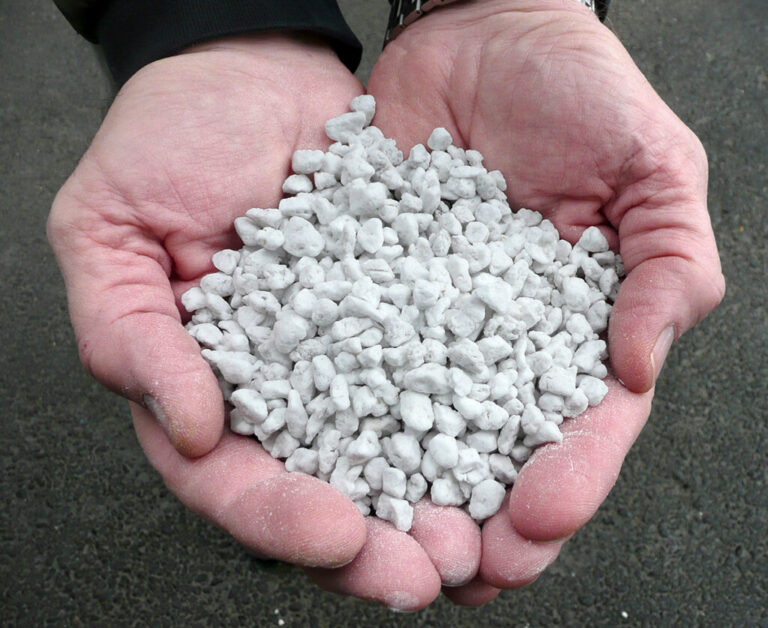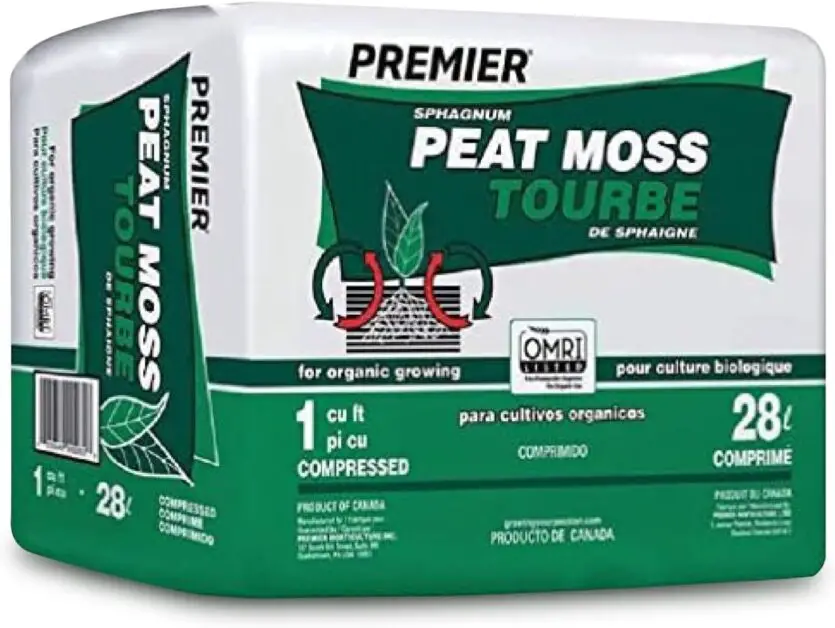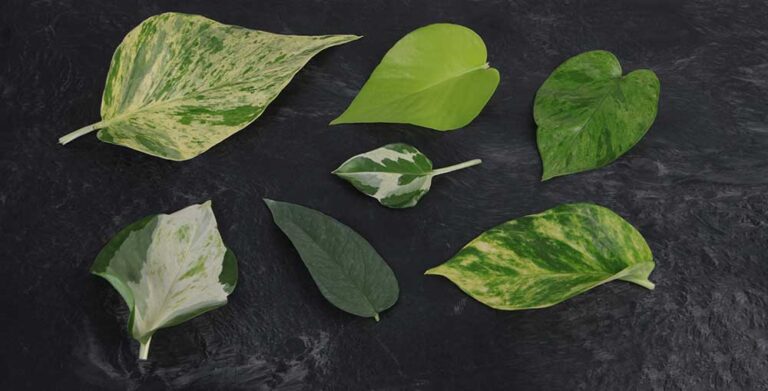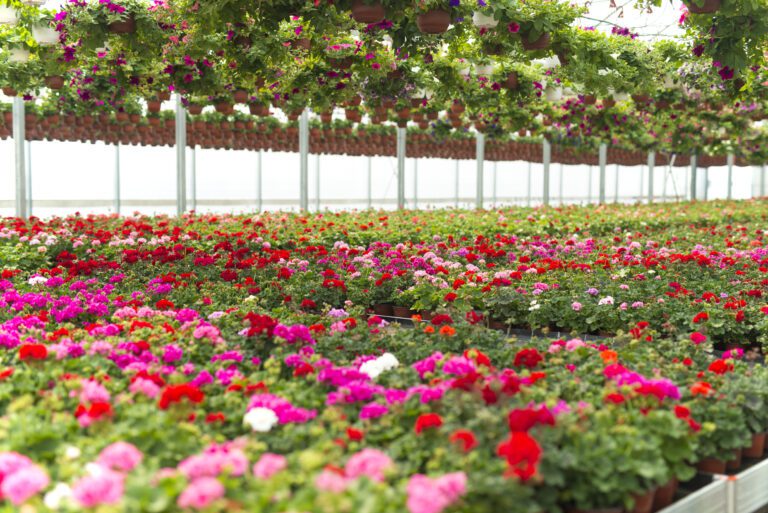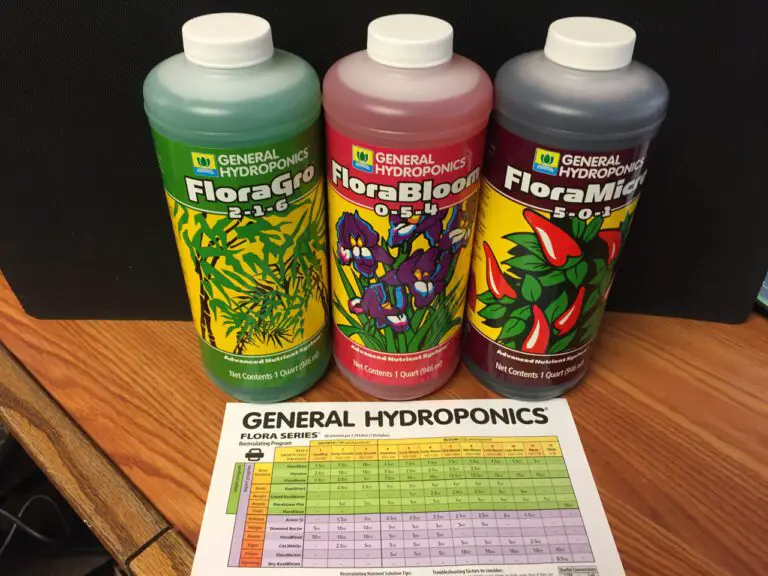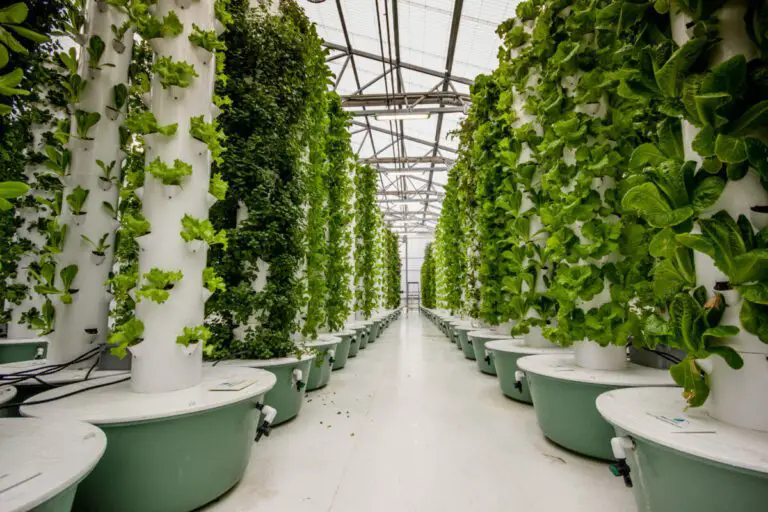The Ideal Amount of Perlite for Optimal Plant Growth
Are you using the right amount of perlite for your plants to thrive? Perlite, a lightweight volcanic rock, is a popular addition to soil mixes for its ability to improve drainage and aeration. But how much perlite is too much or too little? In this guide, we’ll uncover the ideal amount of perlite for optimal plant growth. From ensuring proper root development to preventing waterlogging, finding the perfect perlite-to-soil ratio is key. Stay tuned as we share expert insights and practical tips to help you achieve lush, healthy plants. Don’t miss out on maximizing your plant’s potential – let’s dive into the world of perlite and unlock the secrets to flourishing greenery!
Table of Contents
Properties and Characteristics of Perlite
Perlite is a unique volcanic glass that possesses several properties and characteristics that make it highly beneficial in gardening and plant growth.
- Lightweight Nature:
- Composed of tiny, air-filled bubbles.
- Improves soil aeration without adding significant weight.
- Ideal for potted plants and container gardening.
- Water-Holding Capabilities and Drainage:
- Excellent Water Retention: Holds moisture for plant roots.
- Proper Drainage: Porous structure allows excess water to pass through.
- Balanced Moisture: Ensures plants receive water when needed.
- Chemical Inertness:
- Safe for Plants: Does not react with soil nutrients or release harmful substances.
- Versatile Use: Suitable for various gardening applications.
- Sterility and pH-Neutral:
- Reduced Pathogen Risk: Sterile, minimizing the introduction of diseases.
- pH Compatibility: Maintains neutral pH, accommodating different plant species.
- Overall Plant Health:
- Improved Soil Aeration: Supports healthy root development.
- Effective Water Management: Balances moisture levels.
- Essential for Successful Growth: A valuable addition to any gardener’s toolkit.
Overall, the properties and characteristics of perlite, including its lightweight nature, excellent water drainage, chemical inertness, sterility, and pH neutrality, make it a valuable addition to any gardener’s toolkit. These qualities contribute to improved soil aeration, water management, and overall plant health, making perlite an essential component for achieving successful plant growth.
After incorporating Viagrow Perlite into my gardening projects, I found it to be a valuable addition to my soil mixtures. Its lightweight nature made it easy to work with, and I appreciated how it improved soil drainage and aeration. The perlite’s porous texture created a conducive environment for root growth, promoting healthy and robust plants. I also found it to be particularly useful in seed starting mixes, as it prevented soil compaction and allowed for better moisture retention around delicate seedlings.
However, I did notice that perlite lacks nutrients on its own, so I had to supplement it with fertilizers or compost to ensure adequate nutrition for my plants. Additionally, its lightweight properties made it prone to floating to the surface of pots, which required some extra care during watering to ensure the perlite remained evenly distributed throughout the soil. Despite these minor challenges, Viagrow Perlite proved to be a versatile and beneficial soil amendment, contributing to improved soil structure and overall plant health in my garden.
- Improved Drainage: Perlite enhances soil drainage, preventing waterlogging and promoting healthy root growth.
- Aeration: Its lightweight and porous nature improves soil aeration, allowing oxygen to reach plant roots more effectively.
- Root Development: Perlite’s texture encourages robust root development by providing a loose and friable growing medium.
- pH Neutral: Perlite is pH neutral, making it suitable for a wide range of plants and compatible with various growing mediums.
- Sterile: Viagrow Perlite is sterile, reducing the risk of introducing pests, diseases, or weed seeds into the growing environment.
- Versatile Use: It can be used in various gardening applications, including seed starting, potting mixes, and hydroponic systems.
- Longevity: Perlite does not decompose over time, maintaining its beneficial properties and contributing to long-lasting soil health.
- Dustiness: Perlite can produce dust when handled, which may be a concern for individuals with respiratory sensitivities or allergies.
- Lack of Nutrients: Perlite itself does not provide nutrients to plants, so it may need to be supplemented with fertilizers or other amendments for optimal plant growth.
- Lightweight: Perlite is lightweight and can float to the surface of pots or containers, potentially exposing roots to drying out or damage.
- Environmental Impact: The mining and processing of perlite can have environmental implications, although efforts are being made to minimize its ecological footprint.
- Storage Considerations: Perlite should be stored in a dry location to prevent it from absorbing moisture and becoming compacted, which could affect its performance in the garden.
Understanding the Role of Perlite in Soil Aeration
Soil aeration plays a crucial role in the overall health and productivity of plants. It involves the movement of air within the soil, allowing oxygen to reach the roots and promoting proper respiration. One effective way to enhance soil aeration is by incorporating perlite into the growing medium.
Improved Aeration with Perlite:
- Perlite, a lightweight and porous mineral, enhances soil aeration when mixed with soil.
- The addition of perlite creates air pockets, facilitating oxygen exchange between roots and the surrounding environment.
Beneficial in Compacted Soils:
- In compacted or heavy soils, perlite helps alleviate oxygen limitations by providing aeration to roots.
- This ensures roots can access sufficient oxygen for optimal growth and nutrient absorption.
Enhanced Water Drainage:
- Perlite’s unique physical structure aids in water drainage, preventing excess moisture retention in the soil.
- Its porous nature allows water to move freely through the growing medium, reducing the risk of waterlogging and root rot.
Maintaining Optimal Moisture Levels:
- By facilitating proper drainage, perlite helps maintain a well-balanced moisture level in the soil.
- This ensures plants receive adequate moisture without the risk of suffocation or drowning, promoting healthy growth.
Versatility in Application:
- Perlite is suitable for various gardening applications, including gardens, potted plants, and hydroponic systems.
- Its ability to control water absorption makes it a valuable asset in environments where precise moisture management is essential for plant health.
By improving soil aeration and water drainage, perlite provides a solid foundation for successful plant growth and ensures the long-term health and vitality of your garden.
How Perlite Improves Water Drainage in Plant Growth
Perlite is a versatile and valuable addition to any gardening regimen, particularly when it comes to improving water drainage in plant growth. Its unique physical properties make it an excellent choice for enhancing soil structure and preventing waterlogging, which can be detrimental to plant health.
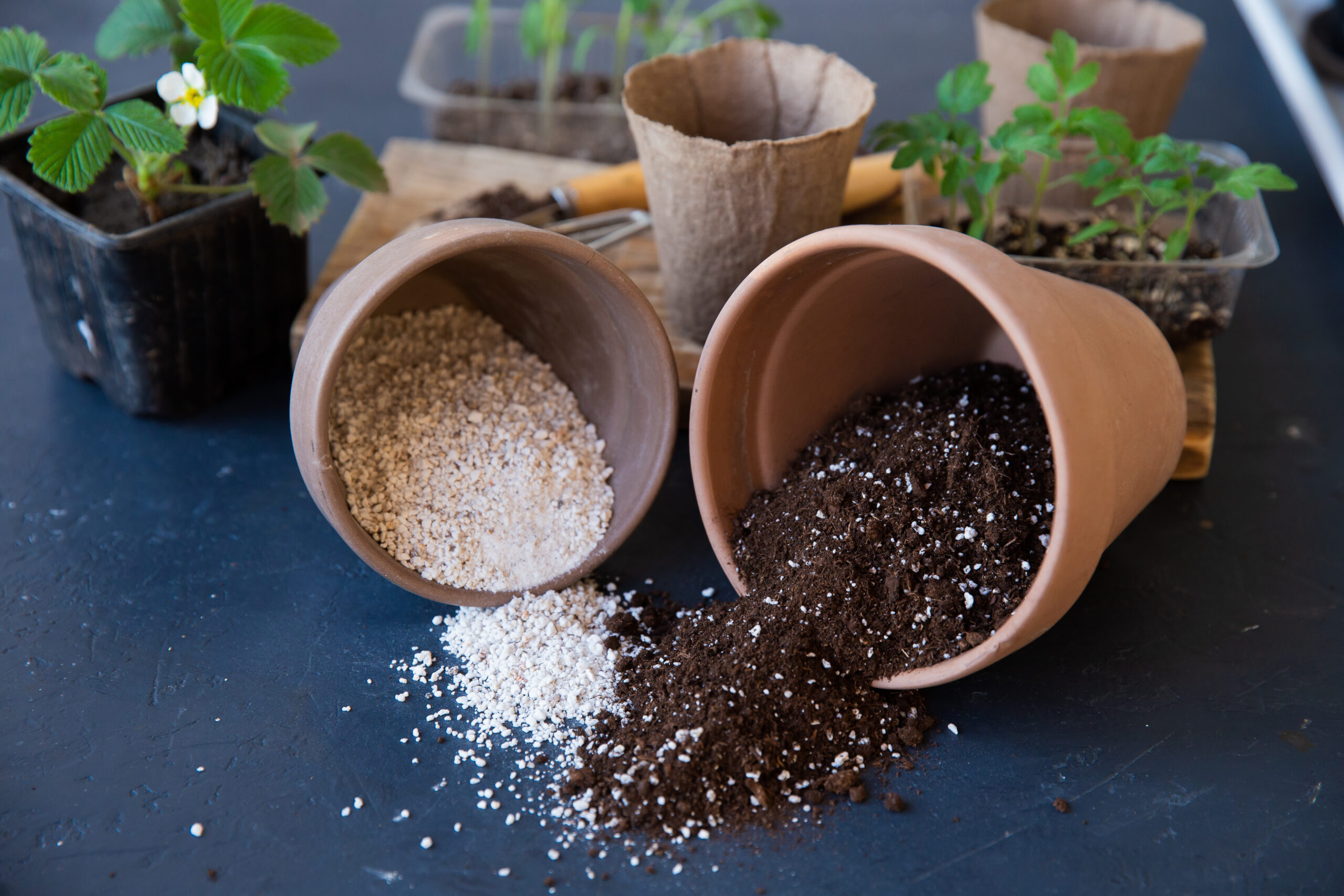
- Water Absorption and Drainage:
- Perlite absorbs and holds water, allowing roots to access moisture.
- Its porous structure creates tiny air spaces, facilitating water movement.
- Excess water drains freely, preventing waterlogging.
- Oxygen Circulation:
- When mixed into soil, perlite promotes oxygen circulation around roots.
- This prevents water stagnation and supports healthy plant growth.
- Moisture Regulation:
- Perlite regulates moisture levels effectively.
- It holds moisture and releases it slowly, preventing under- and over-watering.
- Consistent water supply ensures robust root development and plant health. 🌱
The Importance of Perlite in Preventing Soil Compaction
Perlite, a lightweight volcanic mineral with high water-holding capacity, plays a crucial role in preventing soil compaction. Soil compaction occurs when excessive pressure and weight cause the soil particles to become tightly packed, reducing pore spaces and restricting the movement of air, water, and roots. This can lead to poor drainage, decreased oxygen levels, and stunted plant growth.
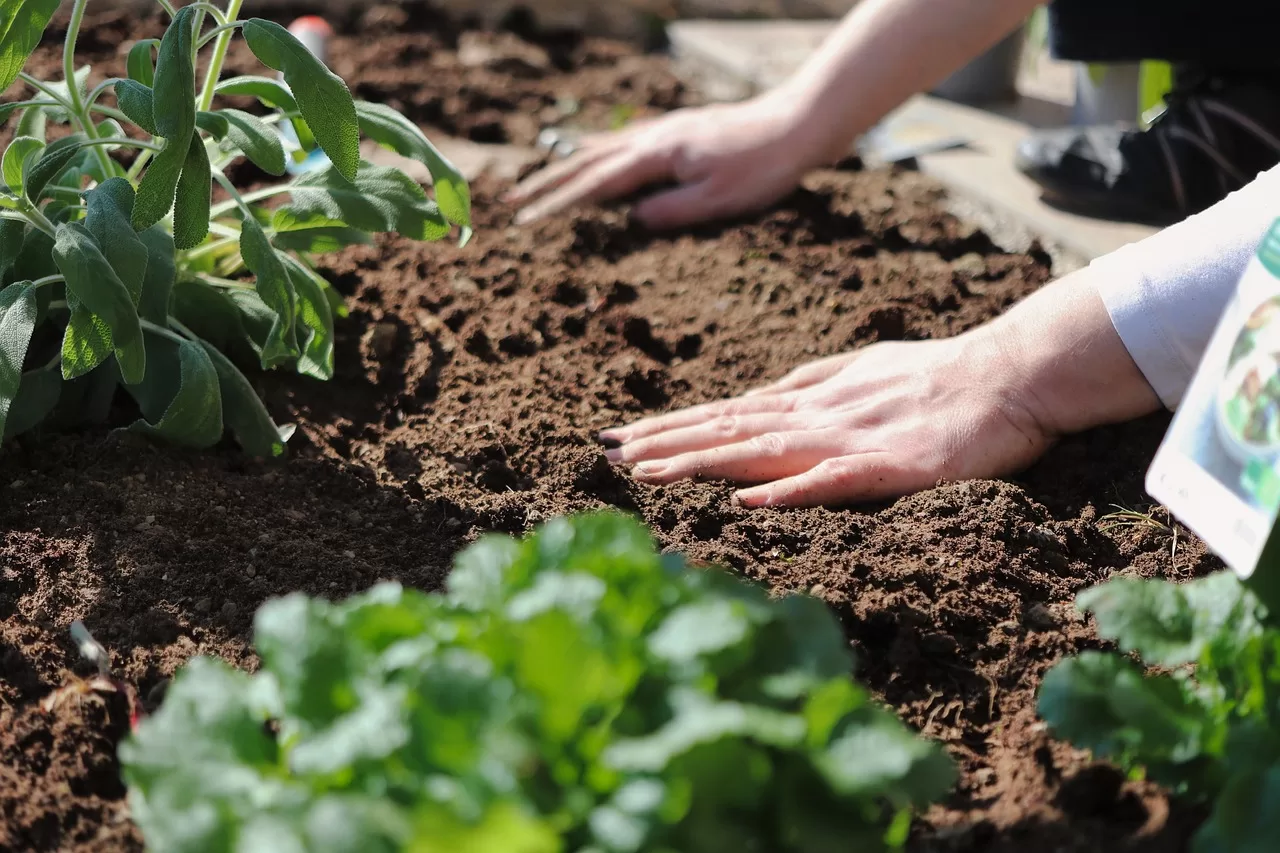
Perlite’s unique structure, comprising tiny, porous particles, creates air pockets within the soil.
These air pockets enhance soil aeration, promoting favorable conditions for root development and nutrient uptake.
By preventing soil compaction, perlite ensures that plant roots have access to the oxygen necessary for metabolic processes.
This contributes to healthier root systems and overall plant vigor.
Perlite’s porous nature enables it to absorb excess moisture from the soil.
Gradual release of absorbed water helps prevent waterlogging, maintaining optimal soil moisture levels.
Perlite’s ability to promote effective water drainage is particularly beneficial in heavy clay soils prone to water retention.
By preventing waterlogged conditions, perlite supports healthy root growth and overall plant development.
Incorporating perlite into the soil creates a well-aerated and well-drained environment, essential for plant health.
Enhanced soil quality leads to healthier, more robust plants with improved growth and vitality.
Perlite can be used in various settings, including potted plants and garden beds, to address soil compaction issues and promote optimal plant growth.
Its benefits extend beyond improving soil structure, making it a valuable tool for gardeners and plant enthusiasts alike.
Enhancing Nutrient Absorption in Plants with Perlite
Perlite, a versatile and widely-used mineral additive, plays a crucial role in enhancing nutrient absorption in plants. Its unique properties make it an excellent choice for gardeners and agricultural enthusiasts seeking to optimize the growth and health of their plants.
- One of the key characteristics of perlite is its porous nature, allowing for efficient air and water circulation in the root zone.
- The presence of perlite in the soil aids in creating a well-draining environment, preventing waterlogging and ensuring that plant roots have access to oxygen.
- The increased aeration and drainage promote the development of a healthy root system, which in turn improves nutrient absorption.
The following table explains about the enhance nutrient absorption in plants with perlite:
| Application/Consideration | Optimal Usage/Tip | Quantitative Impact |
|---|---|---|
| 1. Mixing Perlite in Growing Media | Add perlite to soil or potting mix | – Mix perlite at a ratio of 20-30% to enhance aeration and drainage. |
| Ensure even distribution of perlite particles | – Promotes uniform water and nutrient distribution in the root zone. | |
| 2. Hydroponic Systems with Perlite | Use perlite as a standalone hydroponic medium | – Achieve increased oxygenation and improved nutrient absorption. |
| Monitor and maintain nutrient solution pH and EC levels | – Perlite provides a neutral pH, contributing to stable nutrient levels. | |
| 3. Root Dipping in Perlite Slurry | Dip roots in perlite slurry before transplanting | – Encourages root development and improves nutrient uptake capacity. |
| Maintain a perlite-to-water ratio of 1:1 | – Ensures thorough coverage of roots with perlite during the dipping process. | |
| 4. Perlite Mulching in Gardens | Apply a layer of perlite around plants | – Acts as a reflective surface, reducing soil temperature and enhancing nutrient uptake. |
| Replenish perlite mulch as needed throughout the growing season | – Sustains the beneficial effects of perlite on nutrient absorption. | |
| 5. Aeration Enhancement in Soils | Incorporate perlite to break up compacted soils | – Improves soil structure, allowing better root penetration and nutrient access. |
| Adjust perlite quantity based on soil type and structure | – Tailors perlite application to specific soil improvement needs. | |
| 6. Perlite in Seed Starting Mixes | Include perlite in seed starting mixes | – Facilitates seed germination, providing a loose and well-aerated medium. |
| Ensure perlite particles are finely distributed | – Promotes uniformity in seedling growth and nutrient absorption. |
As perlite does not retain water, it helps prevent the risk of root rot and nutrient deficiencies caused by excess moisture. By creating an ideal balance between air and water in the root zone, perlite facilitates the movement of nutrients to the plant’s roots, enabling better uptake and utilization.
The Impact of Perlite on Root Development and Health
Perlite plays a crucial role in root development and health, making it a valuable resource for gardeners and plant enthusiasts alike. By promoting a well-aerated soil environment, perlite allows roots to expand and flourish. Its lightweight and porous nature create air pockets that enable roots to breathe and grow without being hindered by compacted soil. This leads to improved nutrient uptake and water absorption, ultimately enhancing the overall health of plants.
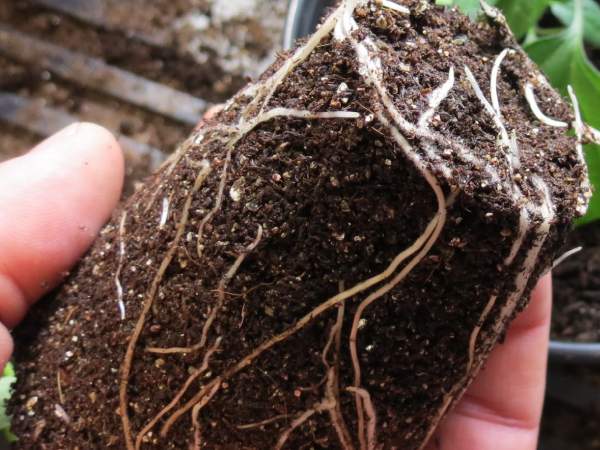
- Root Protection from Waterlogging:
- Perlite’s drainage properties prevent waterlogging around roots.
- Excess water is efficiently removed, reducing the risk of root rot.
- Ideal for plants susceptible to overwatering.
- Moisture Regulation and Disease Prevention:
- Proper moisture levels are maintained by perlite.
- Slow release of moisture prevents both under- and over-watering.
- Healthy root systems thrive in this balanced environment, minimizing fungal diseases.
- Natural Insulation:
- Perlite acts as a natural insulator for plant roots.
- Shields roots from extreme temperature fluctuations.
- Regulates soil temperature, protecting against frost damage and excessive heat.
In conclusion, perlite significantly impacts root development and health by providing a well-aerated soil environment, ensuring efficient water drainage, and offering temperature insulation. Through these beneficial properties, perlite facilitates robust root growth, nutrient absorption, and disease prevention, cultivating healthy and thriving plants. Incorporating perlite into gardening practices can greatly enhance the success of plant growth and contribute to the enjoyment of a flourishing garden or indoor plant collection.
Choosing the Right Perlite Grade for Your Plants
Selecting the appropriate perlite grade for your plants is an essential consideration for successful gardening. Different plants have specific requirements, and matching the right grade of perlite to their needs can make a significant difference in their growth and overall health.

Consider Particle Size:
- Fine-grade perlite, with smaller particles, is suitable for smaller containers or seedlings.
- Coarse-grade perlite, with larger particles, is ideal for larger pots or plants that prefer increased drainage and air circulation.
Moisture Retention Capacity:
- Fine-grade perlite provides excellent water drainage and aeration, making it suitable for plants with lower moisture needs.
- Coarse-grade perlite offers enhanced drainage and air circulation, ideal for plants that require higher levels of moisture control.
Optimal Balance for Root Systems:
- Selecting the correct perlite grade ensures the optimal balance of water and oxygen availability for your plants’ root systems.
- This promotes healthy growth and helps prevent issues like root rot, providing the right environment for plant development.
Factors to Consider When Determining the Amount of Perlite to Use
Determining the appropriate amount of perlite to use in your gardening endeavors requires careful consideration of a few key factors. First and foremost, it is essential to assess the specific needs of your plants. Different plant species have varying requirements when it comes to soil aeration, water drainage, and root development. Understanding these needs will enable you to determine the appropriate amount of perlite to incorporate into your soil mix.
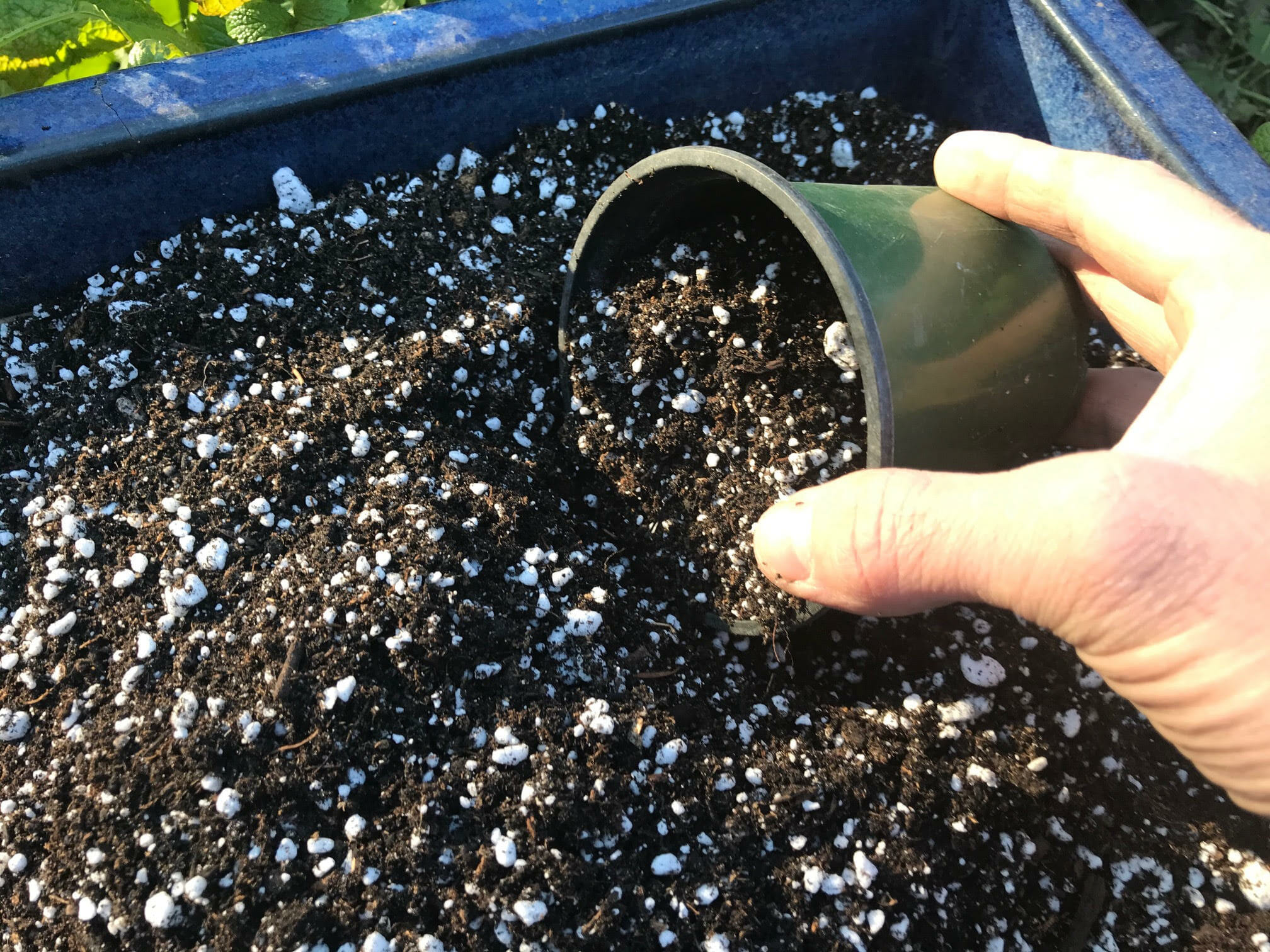
- Soil Type and Drainage:
- Heavy Clay Soils: These soils have poor drainage and tend to compact easily.
- Solution: Increase the proportion of perlite to improve soil structure and prevent compaction.
- Loamy or Sandy Soils: These soils naturally have good drainage.
- Solution: Use a smaller amount of perlite.
- Heavy Clay Soils: These soils have poor drainage and tend to compact easily.
- Moisture Retention Capacity:
- Evaluate the soil’s moisture requirements based on your plants.
- Drier Conditions:
- Increase the concentration of perlite in the soil.
- Promotes better water drainage and prevents waterlogging.
By carefully assessing the needs of your plants, the type of soil, and the desired moisture levels, you can determine the optimal amount of perlite to incorporate into your gardening practices. This thoughtful approach will help ensure healthy plant growth, strong root development, and overall success in your gardening endeavors.
The following table explains the differnet factors and quantities of perlite use based on soil types:
| Soil Type | Considerations | Quantitative Perlite Application |
|---|---|---|
| 1. Clay Soil | Improve aeration and drainage | – Mix perlite at a ratio of 30-40% by volume |
| Break up compacted clay for better root penetration | – Apply perlite to the soil surface and incorporate thoroughly | |
| 2. Sandy Soil | Increase water and nutrient retention | – Mix perlite at a ratio of 20-30% by volume |
| Enhance soil structure for improved nutrient absorption | – Distribute perlite evenly throughout the sandy soil | |
| 3. Loamy Soil | Further enhance drainage and prevent waterlogging | – Mix perlite at a ratio of 20-30% by volume |
| Boost aeration for root health and nutrient accessibility | – Incorporate perlite evenly into the loamy soil | |
| 4. Garden Beds | Promote aeration and prevent compaction in raised beds | – Apply a layer of perlite as mulch |
| Enhance drainage in elevated garden beds | – Mix perlite at a ratio of 20-30% into the existing garden soil | |
| 5. Container Gardening | Improve potting mix for potted plants | – Mix perlite at a ratio of 20-30% by volume into the potting mix |
| Increase drainage and prevent waterlogging in containers | – Add a layer of perlite at the bottom of containers |
Examining the Relationship Between Plant Types and Perlite Usage
Perlite, a versatile and lightweight volcanic rock derivative, plays a crucial role in horticulture as a soil amendment. Its unique properties make it suitable for a wide range of plants, but the extent of its usage can vary depending on the type of plants being grown.
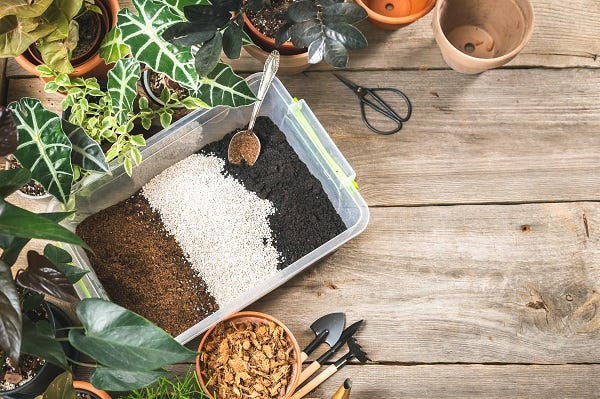
- Shallow-Rooted Plants:
- Examples: Lettuce, herbs.
- Benefit from perlite due to improved aeration.
- Efficient oxygen absorption for healthy growth.
- Helps prevent root rot.
- Recommendation: Incorporate perlite into the soil mix.
- Deep-Rooted Plants:
- Examples: Tomatoes, peppers.
- May not require as much perlite.
- Extensive root systems reach deeper for oxygen.
- Consider soil depth and natural aeration.
- Water Requirements:
- Well-Drained Soil Plants:
- Examples: Succulents.
- Perlite aids in water drainage.
- Prevents waterlogging.
- Maintains optimal moisture levels.
- Moisture-Loving Plants:
- Examples: Ferns, tropical plants.
- May need less or no perlite.
- Natural habitat provides sufficient moisture.
- Adjust perlite use accordingly.
- Well-Drained Soil Plants:
By tailoring perlite application to meet the requirements of various plant types, gardening enthusiasts can maximize the benefits of this valuable soil amendment.
Optimizing Perlite Usage for Different Plant Growth Stages
The growth of plants goes through different stages, each requiring specific conditions for optimal development. When it comes to optimizing perlite usage for different plant growth stages, understanding the needs of your plants is crucial. Perlite is a versatile and lightweight mineral that can greatly enhance plant growth by improving soil aeration, water drainage, and nutrient absorption.
- During the early stages of plant growth, such as germination and seedling establishment, perlite can play a vital role in providing the right environment for healthy root development.
- Its porous nature allows for increased oxygen availability in the root zone, promoting faster and stronger root growth.
- This is particularly beneficial for young plants as it helps establish a strong foundation for their overall development.
- Additionally, perlite’s excellent water drainage properties prevent waterlogging, reducing the risk of root rot and ensuring optimal moisture levels for seedlings.
By using a fine-grade perlite, you can create a well-structured and breathable growing medium that supports successful early-stage plant growth.
Exploring the Effects of Excessive Perlite Usage on Plant Health
Excessive usage of perlite in plant growth can have detrimental effects on plant health. While perlite is renowned for its excellent drainage properties and ability to aerate the soil, overusing it can lead to issues.

Perlite’s highly porous nature absorbs and releases water rapidly, causing soil to dry out faster.
Rapid drying can lead to water stress in plants, resulting in wilted leaves, stunted growth, and potential plant death if left unaddressed.
Excessive perlite usage may disrupt nutrient availability for plants by leaching essential nutrient from the soil.
This can lead to nutrient deficiencies, visible as yellowing leaves, poor flowering or fruiting, and overall diminished plant vigor.
Overuse of perlite can create barriers in the soil, blocking roots’ access to vital nutrients.
This further exacerbates nutrient uptake problems, hindering plant growth and development.
While perlite enhances soil aeration and water drainage, it’s essential to use it judiciously to avoid dehydration and nutrient disruption.
Understanding the specific needs of plant species and implementing appropriate perlite quantities ensures a healthy growing environment while maximizing the benefits of this soil amendment.
Common Mistakes to Avoid When Using Perlite in Plant Growth

- Not Using Perlite as the Sole Medium:
- Issue: Using perlite alone as the primary growing medium.
- Problem: Perlite lacks water-holding capacity.
- Solution: Combine perlite with other mediums (e.g., peat moss or coconut coir) to create a balanced mix.
- Benefits: Improved drainage and sufficient moisture retention for plant roots.
- Overusing Perlite:
- Issue: Excessive perlite in the potting mix.
- Problem: Soil dries out too quickly.
- Impact: Stressed and dehydrated plants.
- Recommendation: Use perlite in the right ratio with other growing mediums.
- Balance: Optimal moisture levels for plant health.
Remember, thoughtful integration of perlite with other mediums ensures healthy plant growth and avoids common pitfalls. 🌱🌿
After using Premier Horticulture Pro Moss Horticultural Peat Moss in my gardening endeavors, I found it to be a reliable and versatile soil amendment. Its exceptional water retention properties proved invaluable, ensuring that my plants remained adequately hydrated even during periods of drought. I appreciated how it improved the structure of my soil, loosening compacted areas and enhancing overall drainage, which contributed to healthier root development and plant growth. Additionally, its acidic nature made it suitable for acid-loving plants like azaleas and blueberries, adding to its versatility in various gardening applications.
However, I did encounter some concerns regarding its environmental impact. Peat moss is harvested from delicate peat bogs, which are crucial ecosystems that can take centuries to regenerate. This raised ethical considerations for me, as I became more aware of the potential habitat destruction and carbon release associated with its extraction. Additionally, while peat moss offers long-lasting benefits when incorporated into the soil, its initial dryness upon purchase required thorough moistening before use, adding an extra step to the gardening process. Despite these considerations, Premier Horticulture Pro Moss Horticultural Peat Moss proved to be a valuable asset in my garden, providing essential moisture retention and soil structure improvement for healthy plant growth.
✔ Improves Soil Structure: It helps to loosen compacted soil, improving aeration and drainage for healthier root development.
✔ Acidifies Soil: Peat moss is acidic, making it ideal for acid-loving plants like azaleas, rhododendrons, and blueberries.
✔ Organic Matter: It adds organic matter to the soil, which enriches soil fertility and encourages microbial activity.
✔ Reduces Nutrient Leaching: Peat moss helps to retain nutrients in the soil, reducing the risk of nutrient leaching during watering.
✔ Long-Lasting: Once incorporated into the soil, peat moss decomposes slowly, providing long-lasting benefits to garden beds.
✔ Versatile Use: Suitable for a wide range of gardening applications, including seed starting, container gardening, and amending garden beds.
❌ Limited Availability: Peat moss may not be readily available in some areas, requiring special ordering or sourcing.
❌ Acidification: While beneficial for acid-loving plants, the acidic nature of peat moss may be detrimental to plants that prefer neutral or alkaline soil conditions.
❌ Compaction: Peat moss can become compacted over time, reducing its ability to improve soil structure and drainage.
❌ Cost: Peat moss may be more expensive than some other soil amendments, which could be a consideration for budget-conscious gardeners.
❌ Dryness: Peat moss can be quite dry when purchased, requiring thorough moistening before use to ensure proper integration into the soil.
❌ Limited Nutrient Content: While peat moss adds organic matter to the soil, it is relatively low in nutrients, so additional fertilization may be necessary for optimal plant growth.
Measuring Perlite Quantity for Different Pot Sizes
When it comes to measuring the quantity of perlite for different pot sizes, precision is key. The amount of perlite needed can vary depending on the size of the pot and the type of plant being grown. Ensuring the proper ratio of perlite to soil is crucial to achieving optimal plant growth and health.
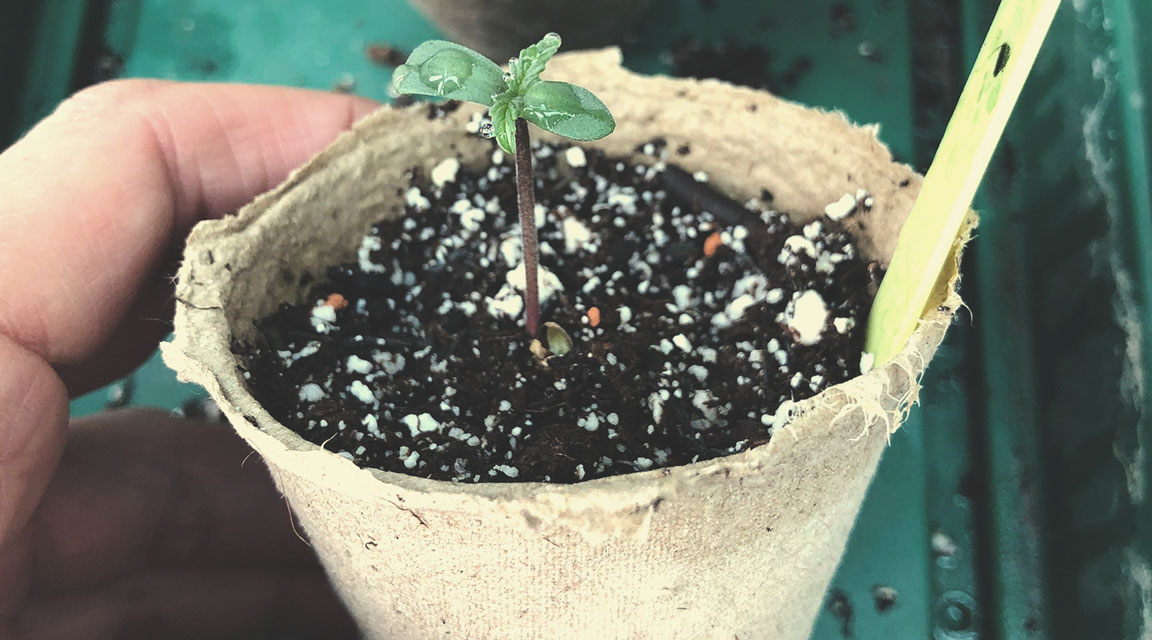
- Ratio of Perlite to Soil:
- As a general guideline, use a ratio of 1:4 perlite to soil for smaller pots and 1:2 for larger pots.
- For example:
- Small pot (1 gallon capacity): Mix approximately 0.25 gallons of perlite with the soil.
- Large pot (5 gallons capacity): Mix approximately 2.5 gallons of perlite with the soil.
- This ratio ensures proper aeration, good drainage, and healthy root development.
- Plant Preferences:
- Keep in mind that different plants have varying preferences for their growing medium.
- Succulents, for instance, thrive in well-draining soil. Adjust the amount of perlite based on the specific requirements of the plant you’re growing.
- Research and Adaptation:
- Always research the specific needs of your plants.
- Factors such as water retention, aeration, and nutrient availability play a crucial role in plant health.
- Adapt the perlite-to-soil ratio accordingly to create an optimal mix for your plants.
By carefully measuring and adjusting the quantity of perlite for different pot sizes, you can ensure that your plants have the ideal growing conditions to thrive. Remember to consider the characteristics of the plants, the pot size, and the desired level of aeration and drainage. With a little precision and knowledge, you can create the perfect perlite-to-soil ratio and watch your plants flourish.
Understanding the Impact of Perlite on Soil pH and Nutrient Availability
Perlite, a lightweight volcanic rock commonly used in horticulture, can have a significant impact on soil pH and nutrient availability.
- The porous nature of perlite allows it to improve drainage, preventing waterlogging and, in turn, reducing the risk of soil acidification.
- By promoting good water movement, perlite helps maintain optimal soil pH levels for plant growth.
- This is particularly important, as extreme pH levels can inhibit nutrient availability and uptake by plant roots.
- In addition to pH regulation, perlite also plays a crucial role in enhancing nutrient availability in the soil.
- The numerous air-filled pores in perlite create a well-aerated growing medium, which promotes root development and nutrient absorption.
- As the roots are able to access oxygen more efficiently, they become more effective at absorbing nutrients from the soil.
- This not only leads to healthier and more vigorous plant growth but also ensures that essential nutrients are readily available for metabolic processes such as photosynthesis and protein synthesis.
- Ultimately, perlite helps optimize nutrient availability, allowing plants to reach their full growth potential.
The Role of Perlite in Disease Prevention and Plant Stress Reduction
Perlite, with its unique properties, plays a crucial role in preventing disease and reducing stress in plants.
Improvement of Soil Drainage:
- Perlite’s tiny pores create air spaces within the soil, enhancing oxygen availability to plant roots.
- Oxygen-rich soil promotes the growth of beneficial microorganisms, which help fend off diseases and improve plant health.
Prevention of Soil Compaction:
- Perlite’s lightweight particles prevent soil compaction, reducing stress and disease susceptibility in plants.
- Loose and well-aerated soil allows roots to penetrate easily, accessing nutrients and moisture effectively.
Maintenance of Proper Soil Structure:
- By preventing soil compaction, perlite helps maintain proper soil structure, promoting healthy root development.
- Strong root systems are resistant to diseases and better equipped to withstand environmental stressors.
Overall Contribution to Plant Health:
- Perlite’s role in improving soil drainage and preventing compaction creates optimal conditions for healthy plant growth.
- Incorporating perlite into gardening practices maximizes plant potential and ensures overall plant well-being.
Maintenance and Reuse of Perlite in Plant Growth
To ensure the optimal health and growth of your plants, it is important to understand the maintenance and reuse of perlite in plant growth. Perlite is a lightweight, porous material that plays a crucial role in improving soil aeration, water drainage, and preventing soil compaction. By properly maintaining and reusing perlite, you can maximize its effectiveness and save resources in the long run.
Over time, perlite can accumulate dust, debris, and unwanted particles that may hinder its performance.
To clean perlite, simply rinse it thoroughly with water. Allow it to dry completely before reusing it.
Regular cleaning ensures that perlite remains effective in providing aeration and drainage.
Store perlite in a dry and clean environment, away from contaminants.
Proper storage helps maintain the quality of perlite and prevents any external substances from affecting its properties.
Before reusing perlite, assess its condition:Look for signs of degradation, such as discoloration or compactness.
If the perlite appears worn out or compacted, consider replacing it with fresh material.
If the perlite is still in good condition, you can reuse it effectively.
Mix it with new perlite in a ratio that maintains its porosity and improves soil structure.
Adapt the ratio based on the specific needs of your plants.
However, if the perlite is still in good condition, you can reuse it by mixing it with new perlite in a ratio that maintains its porosity and improves soil structure. By regularly monitoring the condition of your perlite and making informed decisions about its reuse, you can continue to benefit from its valuable properties in promoting healthy plant growth.
Tips for Successful Plant Growth Using Perlite
Successful plant growth requires careful attention to various factors, and the use of perlite can greatly contribute to the overall health and vitality of your plants. Here are some essential tips to help you achieve successful plant growth using perlite.

- Appropriate Ratio:
- Aim for a ratio of 25-30% perlite to soil or other growing mediums.
- This balance ensures proper aeration, effective water drainage, and prevents soil compaction.
- Adjust the ratio based on the specific needs of your plants.
- Choose the Right Grade:
- Select the appropriate perlite grade:
- Fine-grade perlite: Ideal for seed starting and propagation.
- Medium to coarse-grade perlite: Suitable for potted plants and container gardening.
- Select the appropriate perlite grade:
- Stages of Plant Growth:
- Optimize perlite usage for different growth stages:
- Initial stages: Perlite aids in root development by providing oxygen and preventing root rot.
- As plants mature: Perlite supports nutrient absorption, leading to healthier and more robust plants.
- Optimize perlite usage for different growth stages:
- Avoid Excessive Usage:
- Be cautious not to use excessive perlite, as it can hinder root development and nutrient availability.
By understanding the appropriate ratio and grade of perlite to use, as well as optimizing its usage throughout different growth stages, you can ensure that your plants thrive and flourish. Stay tuned for more valuable information on the benefits and usage of perlite in plant growth.
Watch video for more information:
FAQ
What is perlite and why is it beneficial for plant growth?
Perlite is a volcanic glass that is expanded and processed into lightweight, porous particles. It improves soil aeration, water drainage, nutrient absorption, and prevents soil compaction, making it highly beneficial for plant growth.
How does perlite improve water drainage in plant growth?
Perlite has excellent drainage properties due to its porous nature. It allows excess water to drain out of the soil, preventing waterlogging and promoting healthy root growth.
Can perlite be used for all types of plants?
Yes, perlite can be used for a wide range of plant types including flowers, vegetables, fruits, and herbs. It is suitable for both indoor and outdoor gardening.
How much perlite should I use for my plants?
The amount of perlite to use depends on various factors such as plant type, pot size, and growth stage. It is recommended to mix perlite with soil in a ratio of 1:4 or 1:3 for optimal results.
Can excessive usage of perlite have negative effects on plant health?
Excessive usage of perlite can lead to poor water retention in the soil and may cause the plant to dry out quickly. It is important to strike a balance and not exceed the recommended amount.
Can perlite be reused or should it be replaced after each plant growth cycle?
Perlite can be reused multiple times. It should be sterilized before reuse to prevent the spread of diseases. However, over time, perlite may lose its effectiveness and may need to be replaced.
Does perlite affect the pH level of the soil?
Perlite is pH neutral, which means it does not significantly impact the pH level of the soil. It helps to maintain a balanced soil pH, providing an ideal environment for plant growth.
Can perlite help prevent diseases in plants?
Yes, perlite plays a role in disease prevention as it improves soil aeration, reduces soil compaction, and enhances root health. These factors contribute to a stronger and more resilient plant, making it less susceptible to diseases.
What are some common mistakes to avoid when using perlite in plant growth?
Some common mistakes to avoid include using excessive amounts of perlite, not properly mixing it with soil, and using a grade of perlite that is too fine or too coarse for the specific plant’s needs.
Is perlite suitable for hydroponic gardening?
Yes, perlite is commonly used in hydroponic gardening as it provides excellent aeration and drainage for the plants. It can be used as a standalone medium or mixed with other growing media.

Studied Agricultural Engineering-Plant Protection at University of California, Davis.
Head of Content writing team at Southelmontehydroponics.com

